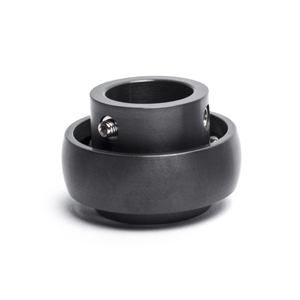Time : Janeiro 12, 2024
Nowadays, ceramic bearings have been standardized and widely used. It has the following advantages:
Ceramic bearings, as a crucial basic component of mechanical equipment, are able to take the lead in the world of new materials due to their superior characteristics that metal bearings cannot surpass, such as high temperature resistance, super strength, and so on. Over the past decade, it has been increasingly widely applied in various industries related to national economy and people’s livelihood. What are the advantages of ceramic bearings compared to other materials? Next, let’s take you to understand.
Ceramic bearings have obvious advantages in the following aspects:
Mechanical characteristics of ceramic materials
Ceramic materials are the materials with the best stiffness and high hardness standards among engineering materials, with most of their hardness standards above 1500HV. Ceramics have high compressive strength, but low tensile strength, poor plasticity and toughness.
Thermal characteristics of ceramic materials
Ceramic materials typically have a high melting point (mostly above 2000 ℃) and excellent chemical stability at high temperatures; The thermal conductivity of ceramics is lower than that of metal materials, and ceramics are also good insulation materials. At the same time, the linear expansion coefficient of ceramics is lower than that of metals, and ceramics have good dimensional stability when the ambient temperature changes.
Electrical characteristics of ceramic materials
Most ceramics have good electrical insulation properties, so they are mostly used to make insulation devices for various voltages (1kV~110kV). Ferroelectric ceramics (barium titanate BaTiO3) have a high dielectric constant and can be used to make capacitors. Under the influence of an external electric field, ferroelectric ceramics can also change their shape and convert electrical energy into mechanical energy (possessing the characteristics of piezoelectric materials). They can be used as amplifiers, record players, ultrasonic instruments, sonar, medical spectrographs, etc. A small portion of ceramics also possess the characteristics of semiconductors and can be used as rectifiers.
Chemical characteristics of ceramic materials
Ceramic materials are not easily oxidized at high temperatures and have good corrosion resistance to acids, alkalis, and salts.
Optical characteristics of ceramic materials
Ceramic materials have unique optical properties and can be used as solid-state laser materials, optical fiber materials, optical storage devices, etc. Transparent ceramics can be used for high-pressure sodium lamp tubes, etc. Magnetic ceramics (ferrites such as MgFe2O4, CuFe2O4, Fe3O4) have broad prospects for use in recording tapes, records, transformer cores, and large computer memory devices.
At present, the product structure is mainly divided into ceramic structural components, all ceramic bearings, hybrid ceramic ball bearings, high-performance plastic bearings, non-magnetic stainless steel bearings, and other special non-standard special bearings. The product mainly has oil-free self-lubricating properties and is widely used in semiconductor production and assembly, petroleum, chemical industry, electronics, electroplating equipment, textile, food, medical, aerospace and other industries.
Performance of ceramic bearings
In the past, bearings were usually made of alloy steel, but their drawbacks gradually became apparent with the expansion of applications. The manufacturing material of ceramic bearings is non-metallic, and silicon nitride (Si3N4) is generally used as the main material. According to relevant data, it has amazing high-temperature resistance performance, even at a high temperature of 1400 ℃, it can still maintain good strength, which many metals cannot achieve. Moreover, its stability is stronger and its comprehensive performance is also strong.
Bearings are composed of three parts: inner ring, outer ring, and rolling element. Today’s ceramic bearings can be divided into group ceramic bearings and hybrid ceramic bearings according to different materials. As the name suggests, all ceramic bearings are made of ceramic materials for their rolling elements and inner and outer rings. All ceramic bearings exhibit more obvious performance in corrosion resistance, high temperature resistance, and wear resistance. Therefore, they can still show unique advantages in harsh usage environments and are widely used in aerospace and medical health. Hybrid ceramic bearings are commonly used in high-precision machine tool spindles because they have a certain degree of lubricity and can effectively prevent oil film damage from sticking and burning. Therefore, they can still maintain good stress even under high-speed operation.
2024 January 2nd Week XZBRG Product Recommendation:
Rolamentos de pastilha de cerâmica completos:
Rolamentos de pastilha de cerâmica tem resistência a altas temperaturas, resistência ao frio, resistência ao desgaste, resistência à corrosão, sem isolamento de magnetoeletricidade, autolubrificação livre de óleo, características de alta velocidade, pode ser usado em condições ambientais extremas e condições especiais.
Configuration:
https://www.xzballbearing.com/product/ceramic-insert-bearings/
